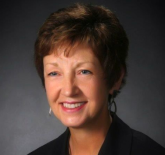Online Planner Helps Build Healthier Schools

Previously published in Volume 82, Issue 3
The Healthy School Planner is an online tool that schools across Canada can use, free of charge, to assess the health of their school and build a plan for action. Available in English and French, the planner introduces schools to the fundamental steps of planning for a healthier school using a comprehensive and holistic approach.
The planner was developed by the Pan-Canadian Joint Consortium for School Health together with a team from the Propel Centre for Population Health Impact, at the University of Waterloo. To date, the planner has been used by more than 1,500 schools across Canada as they seek to create healthier school communities.
A comprehensive approach
The Healthy School Planner is based on a framework known in Canada as comprehensive school health (CSH). CSH is an internationally recognized approach to supporting improvements in students’ educational outcomes while addressing school health in a planned, integrated and holistic way. This whole-school model builds capacity to incorporate wellbeing as an essential aspect of student achievement. Actions using a CSH approach address four distinct but inter-related components:
- social and physical environment
- teaching and learning
- partnerships and services
- policy
When plans and actions to improve the well-being of a school community reflect all four components, students are better supported to realize their full potential as learners, and as healthy, productive members of society.
Why use the Healthy School Planner?
With increasing recognition of the link between healthier kids and improved learning outcomes, more and more schools are taking action to improve the well-being of their students, staff and greater school community. There is a positive link between health status and educational achievement across the lifespan (Furnee et al., 2008); additional research from the World Health Organization (Stewart-Brown, S., 2006), the Journal of School Health (Murray, N.D. et. al., 2007), and others (Basset-Gunter et al., 2015) shows that students learn best when they are healthy, safe and feel connected to their school. An investment in a healthy school community is an investment in student success.
A recent evaluation of the Healthy School Planner confirmed that schools are motivated to use the planner because they are interested not only in creating a healthier school, but also in the opportunity to forge new partnerships and connections with parents, volunteers and businesses in the whole school community.
Accessing the healthy school planner
The Healthy School Planner – available online and at no cost to schools across the country – can be found on the Joint Consortium for School Health website at www.jcsh-cces.ca. There is an option to “preview as guest” in order to gain an initial understanding of all the planner has to offer, as well as the option to register and create an account, which provides schools with the full suite of planner offerings, including customized feedback reports and recommendations. Those interested in sharing or learning more about the planner might also consider watching the Healthy School Planner promotional video or webinar.
How do I complete the Healthy School Planner?
The Healthy School Planner starts with the foundational module, where the fundamental steps of planning for a healthier school are introduced. The first recommended step is that schools form a diverse team to complete the planner. With a team in place, schools are best positioned to undertake their assessment, interpret their results, make a plan for improvement, and celebrate their successes.
After completing the foundational module, schools can choose to complete additional modules in one or more topic-specific areas:
- tobacco use
- physical activity
- healthy eating
- positive mental health.
Each topic-specific module is available in express format (for a quick snapshot of a school’s status in a particular area) or in detailed format (for a more thorough, in-depth assessment). There is no need to complete modules in one sitting; users can stop and save at any point along the way.
After the assessment: planning and action
Immediately after completing any planner module, users can generate and print a customized feedback report. These reports, organized in rubric format, plot the school’s status for each indicator along a continuum, and provide tailored feedback, recommendations and tips to assist the school in making progress in selected priority areas. Additional supports include an action planning template to help navigate the necessary steps to move from goal-setting through to achieving and celebrating results, as well as an extensive resource list: a collection of provincial, territorial, national and international resources organized by school health topic that can help school communities translate their plans into actions.
Cross-country feedback
“It is accessible. It reinforces, informs, motivates, directs and reaffirms the importance and significance of the healthy school plan for our school.”
“It showed us where we excelled and where we really needed work.”
“…we need to put this in our School Improvement Plan. Now we need to move forward. How are we going to do it? And so then we made plans. It was a perfect lead up into what we needed to do to make ourselves better.”
“This is a wonderful initiative that we really need to see grow in our country.”
References
Bassett-Gunter R; Yessis J; Manske S; Gleddie D. (2015) Healthy school communities in Canada. Health Education Journal. 1-1
Murray, N.D., Low, B.J., Hollis, C., Cross, A. Davis, S. (2007). Coordinated school health programs and academic achievement: a systematic review of the literature. Journal of School Health, 77 (9), 589-599.
Stewart-Brown, S. (2006). What is the evidence on school health promotion in improving health or preventing disease and, specifically, what is the effectiveness of the health promoting schools approach? Copenhagen, WHO Regional Office for Europe (Health Evidence Network report; http://www.euro.who.int/document/e88185.pdf, accessed 16 Sep. 2008).











